The 148th Rath Yatra in Gujarat: A Sacred Celebration of Faith, Culture & Community
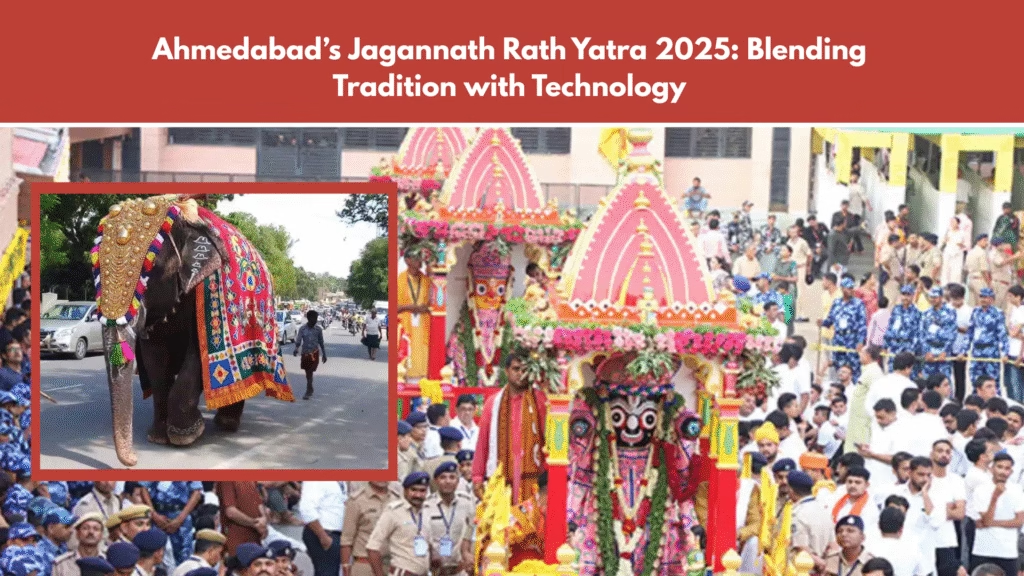
148th Rath Yatra in Gujara
The 148th Rath Yatra in Gujarat: Every year, on the auspicious day of Ashadha Shukla Dwitiya, millions of devotees from across Gujarat and beyond unite in fervent devotion to pull the chariots of Lord Jagannath, Balabhadra, and Subhadra. In 2025, Ahmedabad once again witnessed this grand spectacle for its 148th Rath Yatra—a blend of age-old spiritual reverence and cutting-edge logistics. From elephants and powerful trucks to drones and AI-based crowd security, this year’s celebration was both timeless and modern. Here’s the detailed narrative of an unforgettable day in Gujarat’s religious calendar.
Historical Importance of the Ahmedabad Rath Yatra
- Origins: Launched in 1878 after saint Narsimhadas had a divine vision, the Ahmedabad Rath Yatra was established at the Jagannath Temple in Jamalpur.
- Rank: It stands as the third-largest Rath Yatra in India—after Puri and Kolkata—drawing vast crowds each year .
Pre-Yatra Rituals and Preparations
1. Netrotsav & Idol Protection
A special “eye treatment” called Netrotsav is performed a couple of days before the Yatra, remedying symbolic eye ailments from excessive eating of Jambul berries .
2. Jal Yatra & Abhisheka
A procession to Sabarmati River, the Jal Yatra, brings holy water back for tantric abhishekhs at the temple .
3. Mameru Ceremony & Golden Attire
Devotees witness Mameru, where the deities are dressed in golden garments (Sona Vesh) and given gifts by their “maternal uncle,” known locally as Mama .
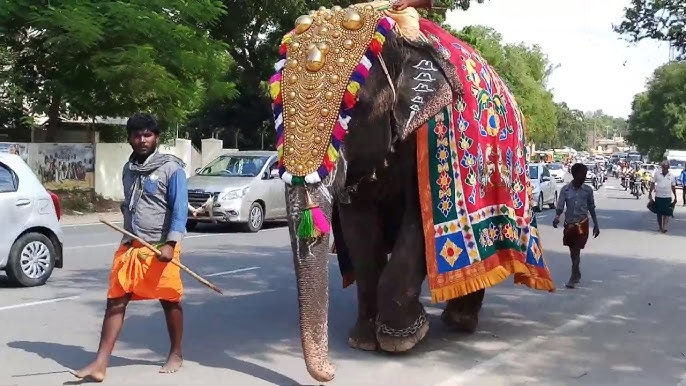
Day of 148th Rath Yatra in Gujarat: June 27, 2025
Mangla Aarti & Pahind Vidhi
- The morning begins with Mangla Aarti at 4 a.m., marking the official commencement.
- This is followed by the symbolic Pahind Vidhi, where Chief Minister Bhupendra Patel ceremonially sweeps the path, signifying humility and service .
Flag-off & Chariot Start for 148th Rath Yatra in Gujarat
- CM Patel initiated the Yatra by physically tugging the chariots.
- It began at 7 a.m., with three elaborately decorated chariots—Nandighosh (Jagannath), Taladhwaj (Balabhadra), and Devdalana (Subhadra)—pulled along the 16–18 km route .
Massive Scale: Devotees, Elephants, Trucks & Bhajans
- 18 elephants, 101 thematic trucks, 30 akhadas, 18 bhajan-ascet groups, and renowned bands joined the procession .
- Over 2,500 saints and monks from regions like Haridwar, Ayodhya, Nashik, and local Gujarat added to the spiritual fervour .
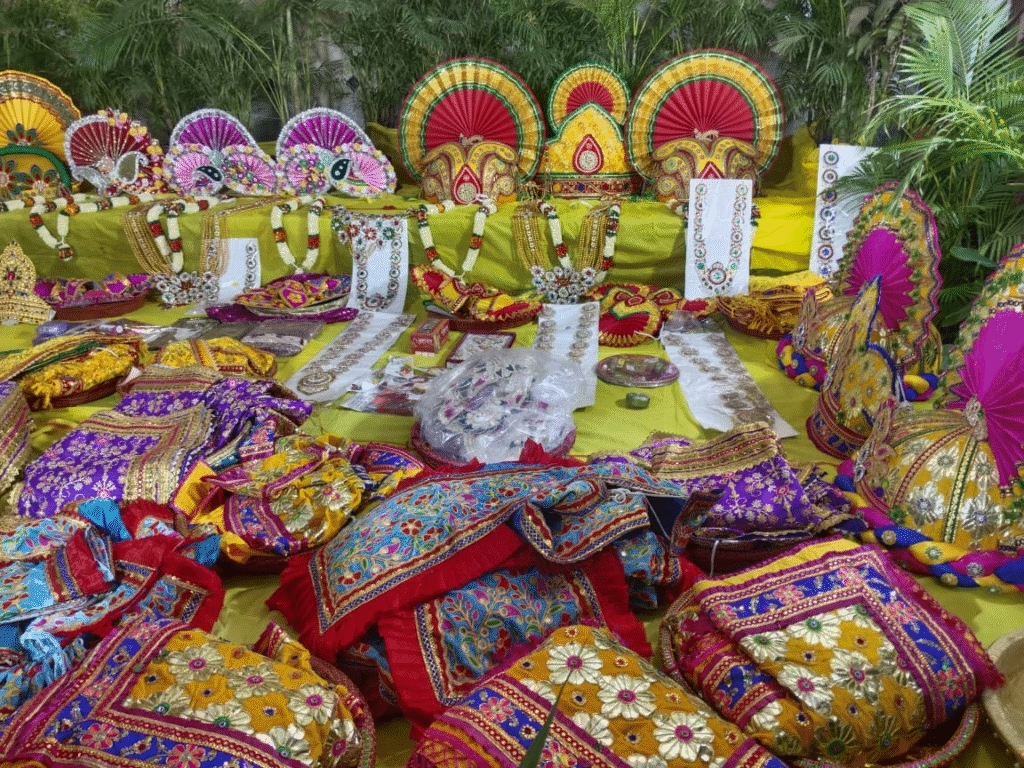
Modern Security & Indian Innovation
- Personnel Deployed: Nearly 24,000 personnel including police, Rapid Action Force, home guards, and Reserve Police Units .
- Tech-Enhanced Monitoring: 300+ CCTV cameras, 41 drones, 60 drone towers, & AI-based crowd control monitored attendees .
- Extra Measures: 1,000 traffic staff, 23 cranes, 44 PA systems, health booths, and emergency vehicles reinforced safety infrastructure .
Moment of Tension: Elephant Incident
- Chaos erupted in Khadia/Desai Ni Pol when one male elephant, among the 18, became agitated by loud music and broke free, charging into crowds .
- Attendees panicked, though volunteer mahouts, forest staff, and police quickly stepped in. Female elephants were brought in to calm him, and sound systems were immediately muted.
- Around 2–3 people suffered minor injuries; none were life-threatening .
Highlights from the Procession
- Chariots paused at Saraspur (considered the deities’ maternal home), where the Mameru ritual concluded
- A powerful symbol of communal harmony was evident as Hindu and Muslim communities together showered flowers on the deities .
- The route became a visual and cultural kaleidoscope: bhajans, tribal dance performances, martial arts by women, and tableaux themed on topics like “Operation Sindoor” & AI plane safety .
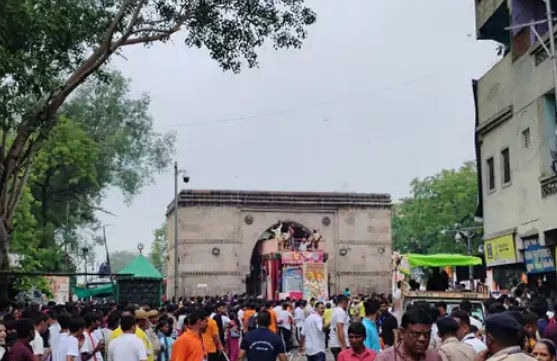
Cultural Context & Spiritual Resonance 148th Rath Yatra in Gujarat
- The festival coincides with Ashadhi Bij, the monsoon’s early stage—crucial for agriculture and crop prosperity.
- As a Lokotsav, it embodies Gujarat’s communal solidarity—over 50 locations across the state, with Ahmedabad leading .
- Distribution of nutritious sprouted mung (mug prasād) during the procession symbolizes health and spiritual nourishment.
Community Experience & Feedback
- Pre-event: Authorities held more than 400 peace and mohalla meetings to foster communal harmony.
- Health advisories: Especially for elderly and those with symptoms, authorities suggested remote participation to prevent COVID risks.
- Bank holiday: Financial services were suspended on June 27 in several states to facilitate public participation.
Post-Yatra Legacy & Impact
- Blessings Return Home: Chariots journey back to the temple by nightfall. The entire route lit up in prayer, remembrance, and unity .
- Evolving Traditions: From ancient rituals to AI-monitored safety, the event symbolizes how heritage and innovation can walk hand-in-hand.
- Education & Unity: Acts like communal flower offerings and tech-driven inclusivity leave a legacy of shared respect and peace.
- Strengthened Identity: For Ahmedabad, the Rath Yatra is more than a religious event—it’s a city-wide identity, with each year reinforcing civic pride.
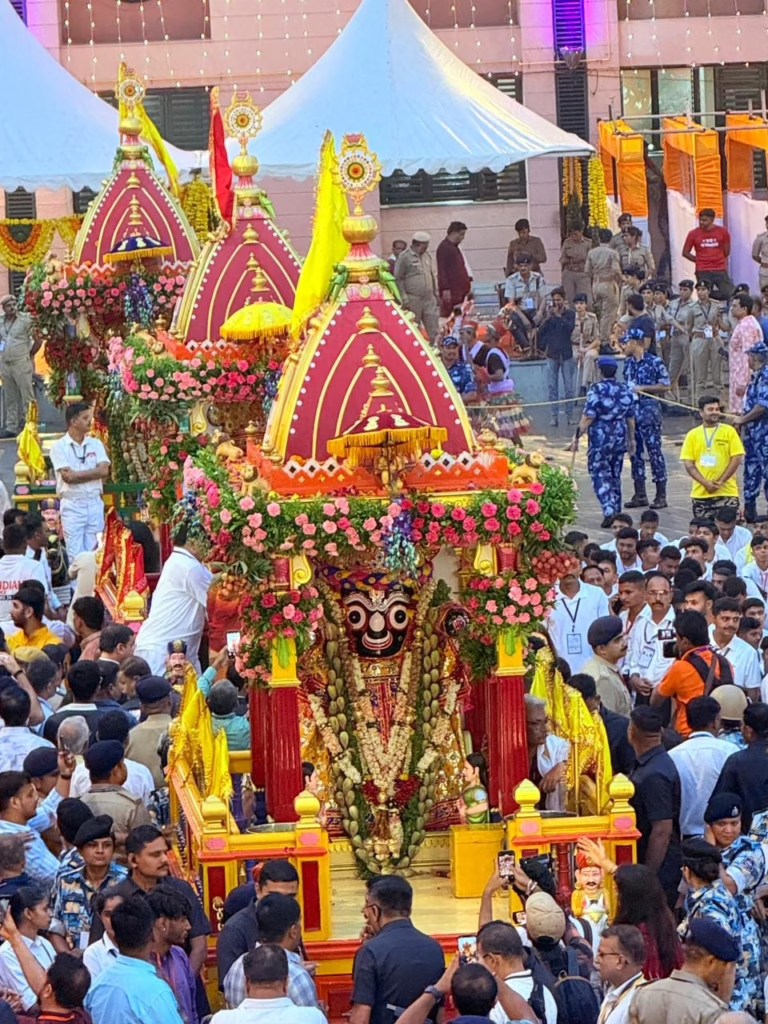
Reflections & Takeaways
- Devotion transcends boundaries: Regardless of age or background, millions unite in collective faith.
- Innovation enhances safety: Cutting-edge crowd management shows festivals can be joyous and secure.
- Culture scales with care: Logistics support massive turnout while preserving the soul of the Yatra.
- Communal bonds endure: Shared festive rites continue to foster unity in Gujarat’s diverse fabric.
Conclusion of 148th Rath Yatra in Gujarat
The 148th Rath Yatra in Gujarat was more than a star-studded religious event—it was a vibrant demonstration of how faith adapts to the modern age without losing its essence. We witnessed ancient chants and futuristic drones, heartfelt unity and split-second crisis control. From the Pahind Vidhi at dawn to the chariots returning at dusk, it was a living tableau of temple-everyday synergy.
Whether you’re a devout pilgrim, a culture enthusiast, or simply fascinated by public event management, this Rath Yatra exemplifies how tradition and technology together illuminate communities. May the spirit of Jay Jagannath inspire unity, harmony, and innovation in every walk of life.




